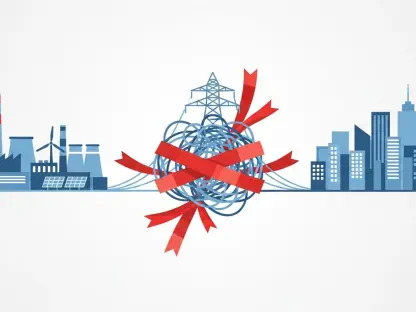In the ever-evolving telecommunications landscape, where diversification into digital and AI services often dominates strategic agendas, one of New Zealand’s largest operators is taking a strikingly different path to tackle its challenges. Spark, facing intense competition and a sluggish local economy, has unveiled an ambitious 2030 strategy that pivots sharply toward its core business of connectivity. Under the leadership of CEO Jolie Hodson, the company is prioritizing stable, long-term returns for shareholders by focusing on consistent free cash flow growth and sustainable dividends. This deliberate shift away from the industry trend of branching into broader tech arenas raises a critical question about whether a return to foundational services can truly reignite growth for a company grappling with recent financial setbacks. As Spark doubles down on mobile, broadband, and enterprise connectivity, the stakes are high in a market that demands both innovation and reliability.
Focusing on Core Connectivity Strengths
Spark’s strategic blueprint for 2030 places an unwavering emphasis on the segments that generate 80% of its gross margin: mobile, broadband, and enterprise connectivity. Significant capital expenditure will be directed toward these areas to solidify market leadership, with enhancements like the standalone 5G network, which already covers over half of New Zealand’s population, playing a pivotal role. Plans to repurpose 3G spectrum aim to boost coverage and throughput, while in the enterprise space, the company is streamlining IT and cloud offerings by phasing out outdated products. Additionally, Spark is integrating network AI to elevate service quality and customer experience. This targeted approach reflects a belief that strengthening existing technological advantages can provide a competitive edge in a crowded market. Partnerships, such as the one with API aggregator Aduna to launch security-focused network services like SIM swap detection, further demonstrate a commitment to innovation within the connectivity realm, balancing tradition with selective modernity.
Navigating Economic and Market Challenges
Despite the optimism surrounding Spark’s back-to-basics approach, the road ahead is fraught with hurdles stemming from recent financial struggles and a tepid economic climate. Over the past year, the company experienced a sharp profit decline, prompting drastic measures like cutting roughly 25% of its workforce and divesting key assets, including stakes in tower company Connexa and a major portion of its data center business. Investor sentiment appears cautious, evidenced by a 2.4% drop in stock price on the day the strategy was announced, alongside a year-to-date decline of 17%. However, there is hope on the horizon with economic forecasts predicting a rebound to 3% growth between now and the following year. Spark is banking on this recovery to bolster enterprise demand, which took a hit during the recent 1% economic contraction. While the focus on core services aims to stabilize finances, market skepticism suggests that immediate impacts may be limited, and success will hinge on execution and broader economic trends aligning with expectations.









